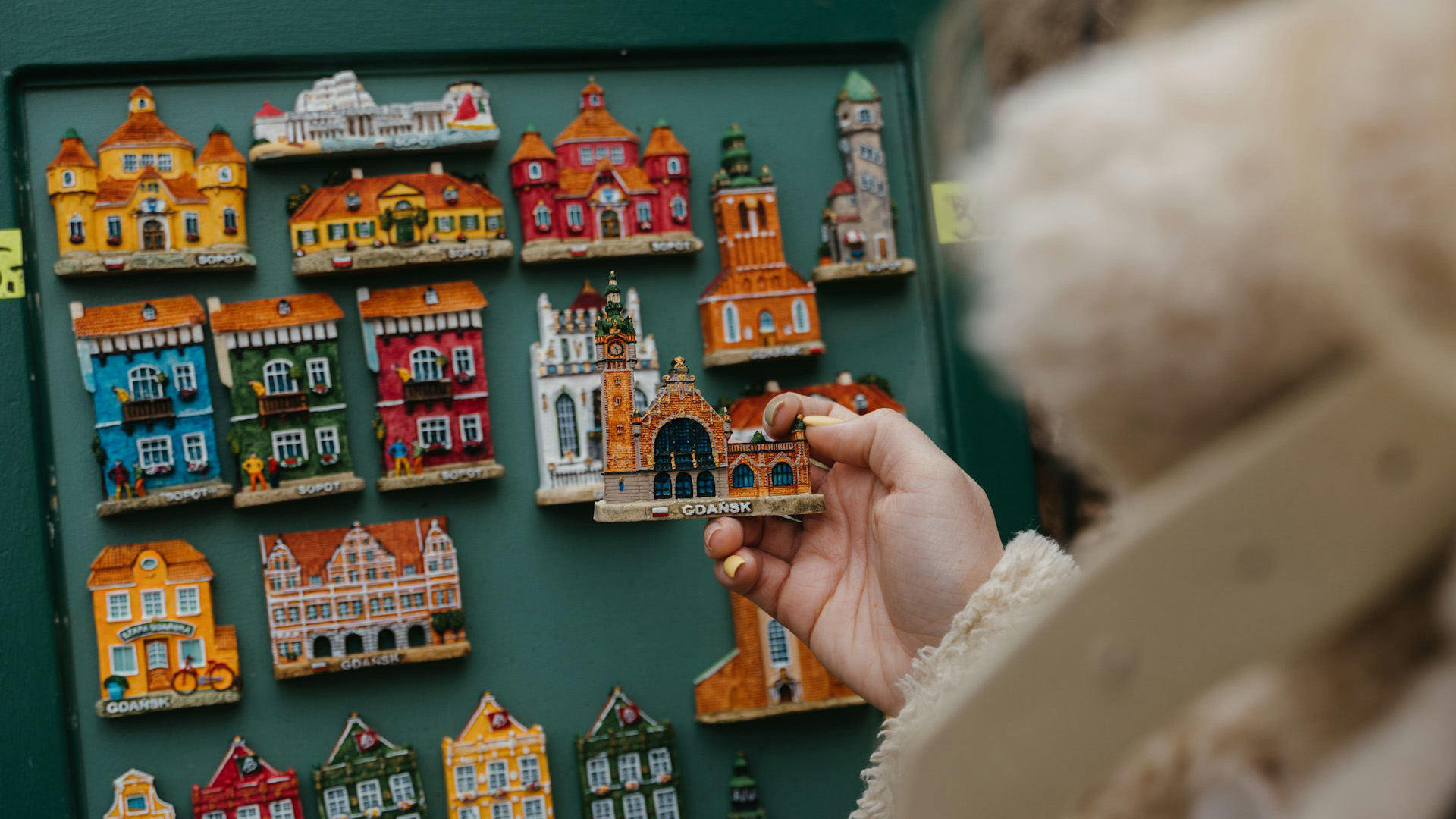
Souvenir shopping in Gdansk / Credit: Polina Kuzovkova
From medieval architecture to bustling modern centres, Poland is a country of remarkable contrasts and vibrant urban landscapes. Nestled in the heart of Europe, it offers travellers a rich tapestry of history and culture, reflected in its diverse cities, each with its own unique story.
Understanding the essence of these cities begins with their distinct character and historical significance. Kraków, with its well-preserved medieval core, leads you back in time, while Warsaw rises as a symbol of resilience and contemporary growth. At the same time, coastal Gdańsk enchants with its maritime vibe, and Wrocław charms with many bridges and waterways. Explore Zakopane’s mountain gateways, the creative pulse of Lódź, and the renaissance beauty of Lublin.
This article guides you through Poland’s must-visit cities, each offering a unique experience for every traveller.
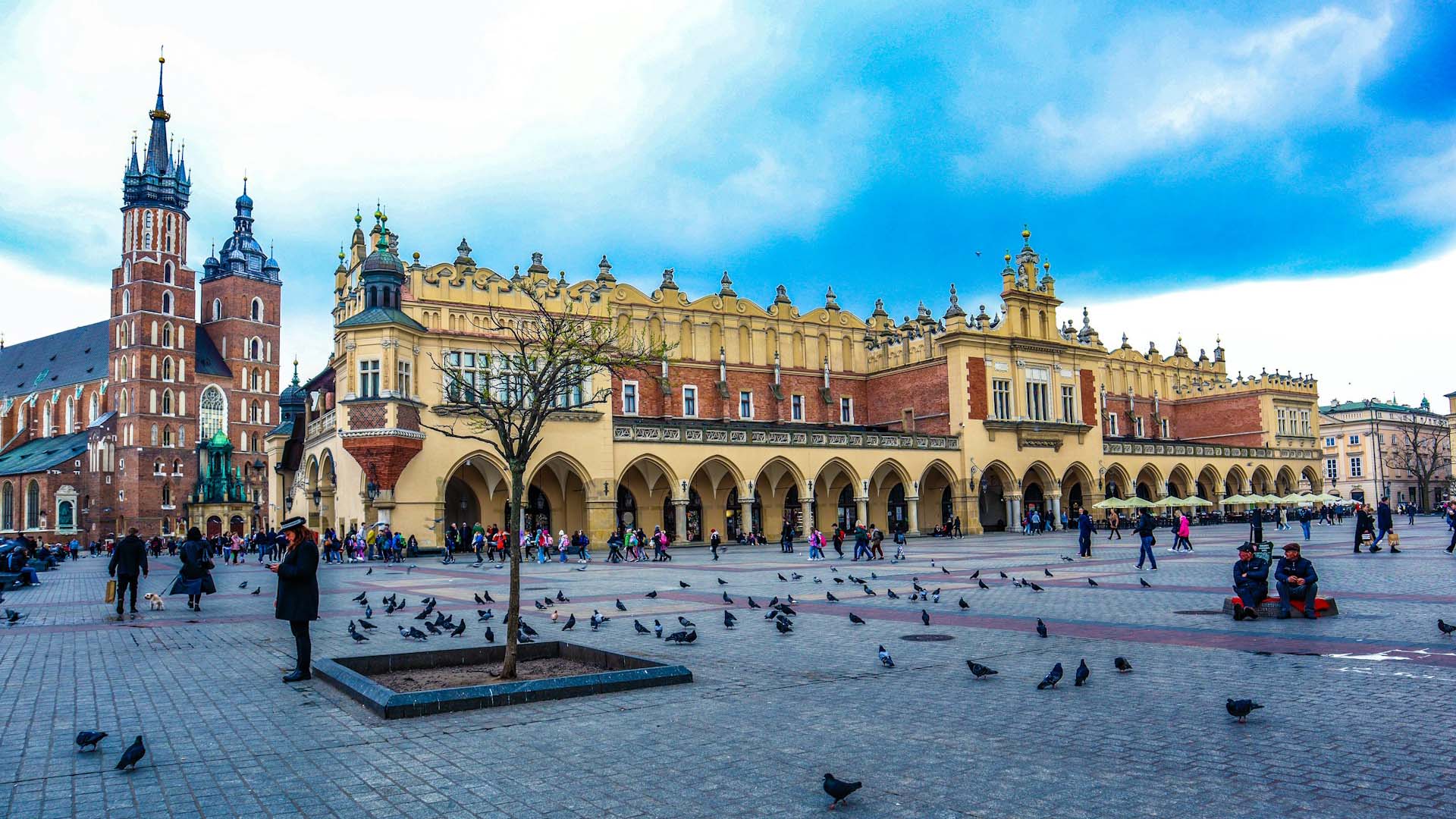
Kraków’s Old Town hub with restaurants, museums, bars, shops, and hotels / Credit: Aimable Mugabo
Kraków: A Journey Through History
Kraków is a city steeped in history and culture. Its historic centre, which includes the Old Town, Kazimierz, and Wawel Castle, has been a UNESCO World Heritage Site since 1978. The Wawel Royal Castle, once home to Polish kings, houses impressive tapestries, paintings, sculptures, and a stunning cathedral. The Main Market Square (Rynek Główny in Polish) is the largest medieval central square in Europe. It is located in a town known for its cobbled streets, Gothic architecture, and Renaissance buildings.
The former Jewish quarter, with its many synagogues, has a somber atmosphere. Many tourists visit Kraków to take a day trip to Auschwitz-Birkenau, a site of great significance in both World War II and Jewish history.
For those seeking a lively atmosphere, Kraków offers a vibrant cultural scene, with the National Museum and various galleries showcasing Poland’s artistic heritage. Bars, clubs, and cafés provide a modern social scene set against a backdrop of historical charm.
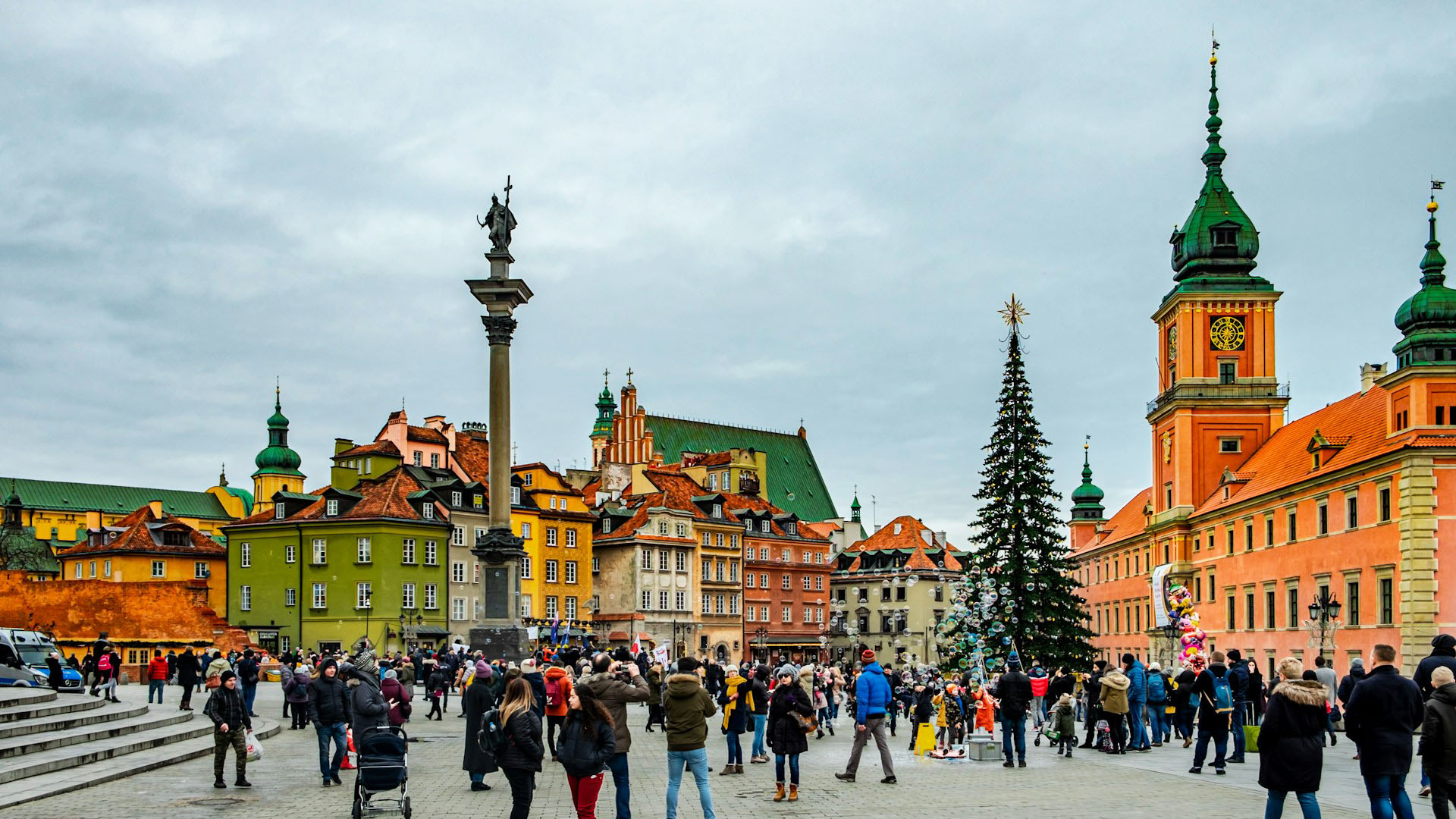
Warsaw’s Old Town Market Square was destroyed in the Warsaw Uprising and rebuilt after WWII / Credit: Elijah G
Warsaw: The Resilient Capital
Warsaw, the vibrant Polish capital, stands as the nation’s largest city. Known for its fascinating mix of historical reconstruction and modern architecture, it offers a unique urban landscape. Over 85% of Warsaw’s historic centre was destroyed during World War II. Yet, the city has been meticulously rebuilt, earning it recognition as a place of resilience and historical importance.
Key tourist attractions include the Warsaw Uprising Museum, where you can learn about Poland’s fight for freedom, and the POLIN Jewish Museum, which explores the complex history and cultural heritage of Polish Jews.
In addition to its rich history, Warsaw provides beautiful green spaces. The parklands around Wilanów Palace and the expansive Lazienki Park offer serene retreats amid the bustling city.
Despite its changes, Warsaw thrives today, blending respect for its past with modern development. It is a must-visit destination for anyone interested in Poland’s history and culture.
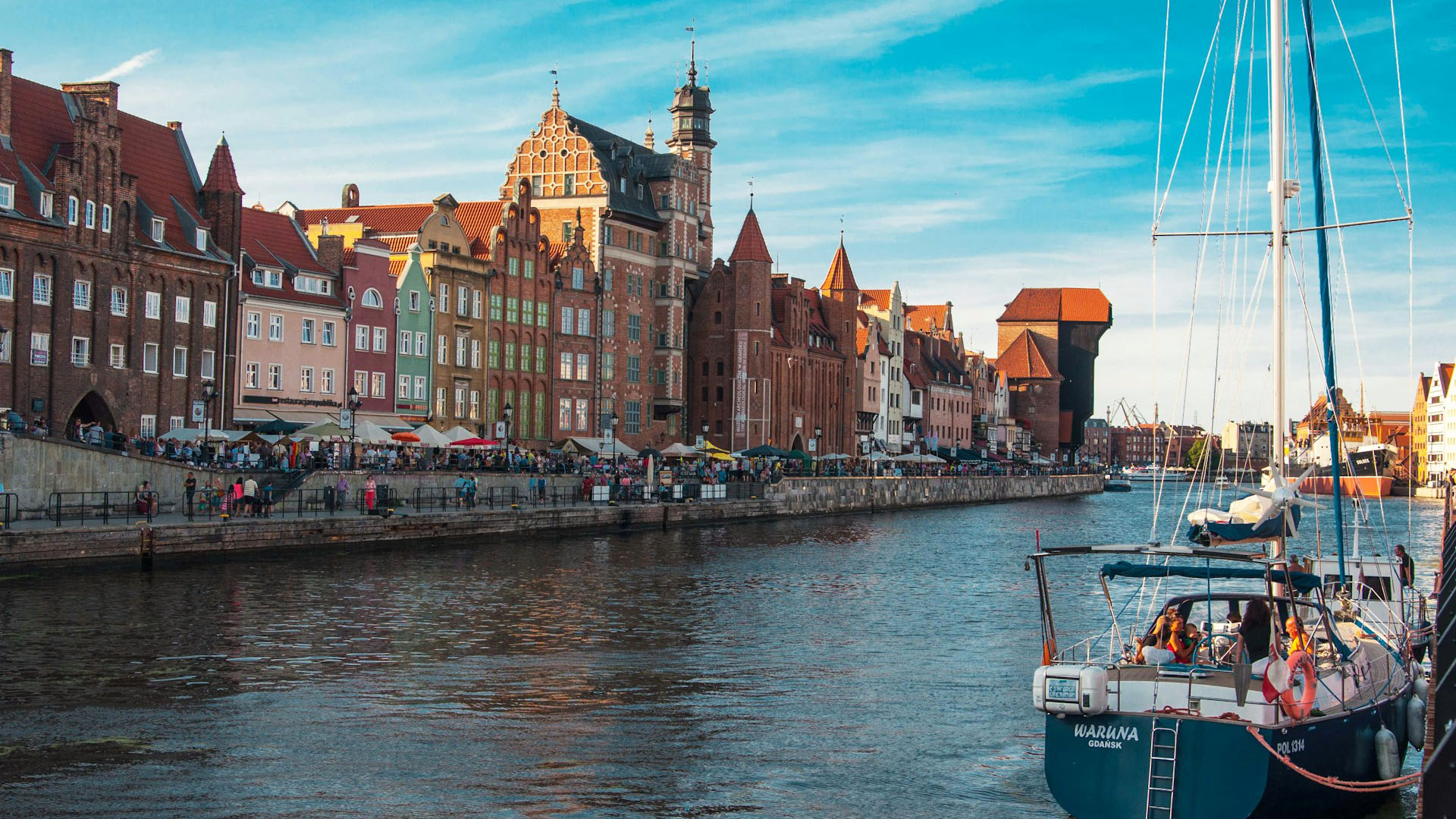
Colourful waterfront buildings and historic architecture line the Motława River in Gdańsk / Julia Boiun
Gdańsk: Baltic Maritime Charm
Gdańsk, a picturesque city on Poland’s Baltic Coast, is part of the Tri-city area along with Sopot and Gdynia. This charming town boasts a rich maritime history and was once an important member of the Hanseatic League. Visitors to Gdańsk are often captivated by its beautiful Gothic architecture and stunning historic structures.
A must-see in Gdańsk is St. Mary’s Church, the largest brick church in the world. The city’s famous Royal Route showcases well-preserved structures from the 17th century, capturing Gdańsk’s architectural style and cultural heritage.
The historic Gdańsk shipyards played a pivotal role in the rise of the Solidarity Movement, making them an intriguing site for anyone interested in Poland’s recent history.
Located just a short distance from Gdansk and easily accessible by train, Malbork Castle is one of the best day trips from the city. Recognized as the largest castle in the world by area, it is also a UNESCO World Heritage Site. Built in the 13th century, Malbork Castle impresses visitors with its towering gates and defensive walls. Be sure to explore its arcaded courtyards, chapels, and the historic Knights’ Hall.
For those seeking both history and modern appeal, Gdańsk is a beautiful city worth discovering.

Wroclaw’s Gnomes: From protest symbols to tourist attractions / Credit: Tadeusz Zachwieja
Wrocław: City of Bridges
Wroclaw, a hidden gem in southwest Poland, is known as the “Venice of the North” because of its more than 100 bridges. The city is built around rivers and islands, creating a unique geographical and architectural tapestry.
As the largest city in western Poland, Wroclaw is a vibrant cultural hub. Its colourful architecture and historic sites reflect a rich history. Before 1945, Wroclaw was known as Breslau and was part of Germany, adding layers to its past.
The city’s lively atmosphere is enhanced by its status as a major science hub. It is home to one of Poland’s largest universities. Additionally, over 600 small gnome statues are scattered throughout Wroclaw, giving the city a quirky charm. These statues offer visitors a delightful treasure hunt.
For those in search of adventure and history, Wroclaw offers endless opportunities. Whether for a day trip or an extended stay, this picturesque city promises a captivating experience.

Hiking in Poland’s Tatra Mountains / Credit: Wallstikk
Zakopane: Gateway to the Tatra Mountains
Zakopane is in Southern Poland, nestled between the Tatra Mountains and Gubalówka Hill. This charming town is the country’s top mountain resort and the winter sports capital. With its high elevation, Zakopane draws around three million tourists annually.
Visitors flock here for the stunning natural beauty and outdoor activities. Zakopane serves as a base for skiing and hiking adventures. The nearby Tatra National Park features diverse landscapes perfect for exploration, making it ideal for hiking and nature walks.
Whether you enjoy winter sports or summer hiking, Zakopane is a Polish town worth visiting. Known for its rich culture and style, it’s a favourite destination year-round.

Poznań Cathedral / Credit: Michael Matloka
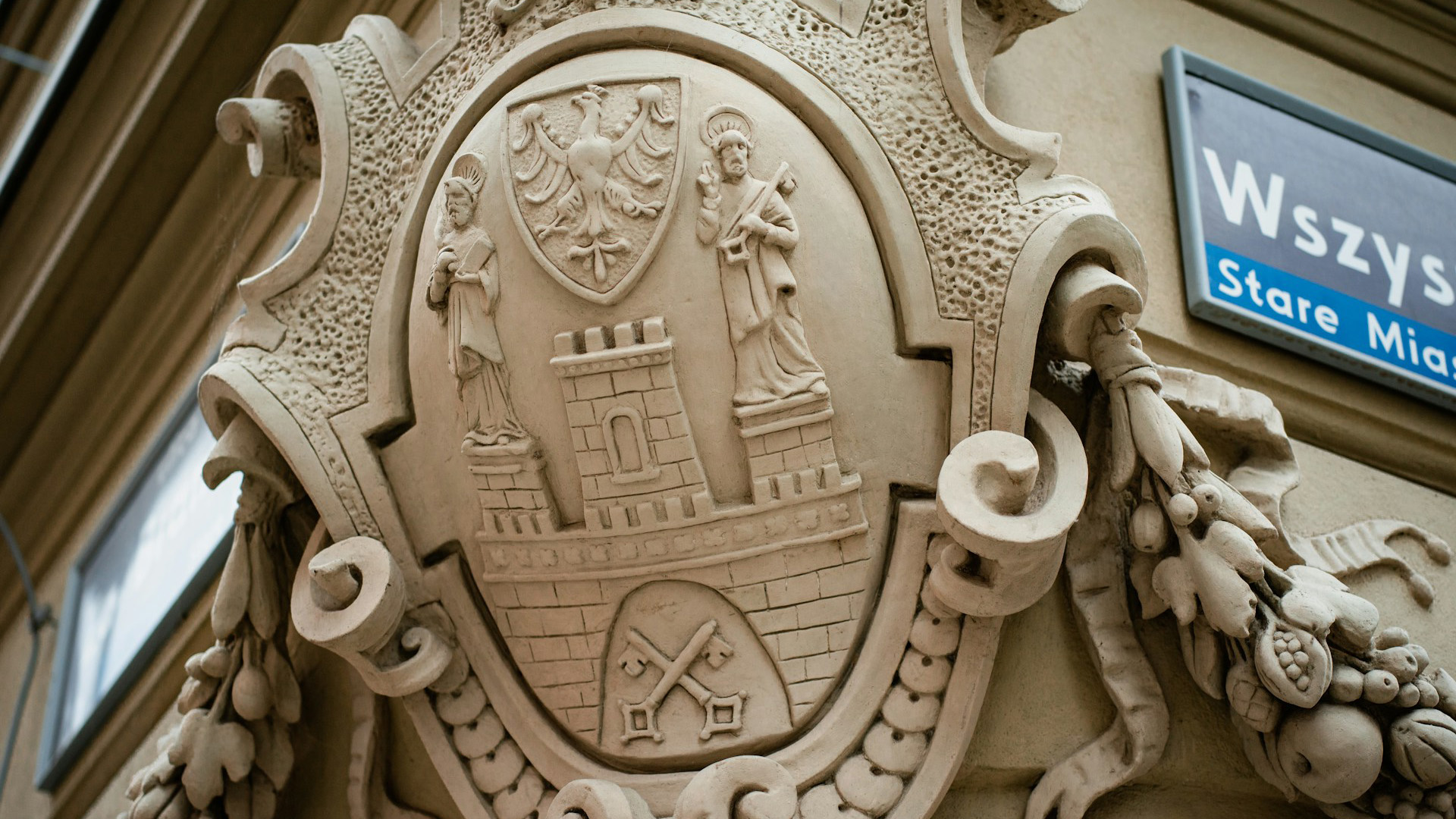
City emblem of Poznań / Credit: Komarov Egor
Poznań: Birthplace of the Polish Nation
Poznań, located in western Poland, is a vibrant university city rich in history. It holds historical significance as the residence of Poland’s first kings. Established in the 9th century, Poznań is one of the country’s oldest cities and serves as the capital of the Wielkopolska region.
A must-see attraction in Poznań is its Town Hall. Each day at noon, mechanical goats emerge to butt heads, delighting both locals and tourists. This quirky tradition showcases the city’s unique charm.
The city’s heart lies in its Old Town, famous for its colourful tenement houses. This area is also home to Poland’s oldest cathedral, a testament to Poznań’s rich history.
A visit to Ostrów Tumski, or Cathedral Island, offers a peaceful retreat. Known as the city’s birthplace, this island is sparsely populated, mainly by members of the clergy.
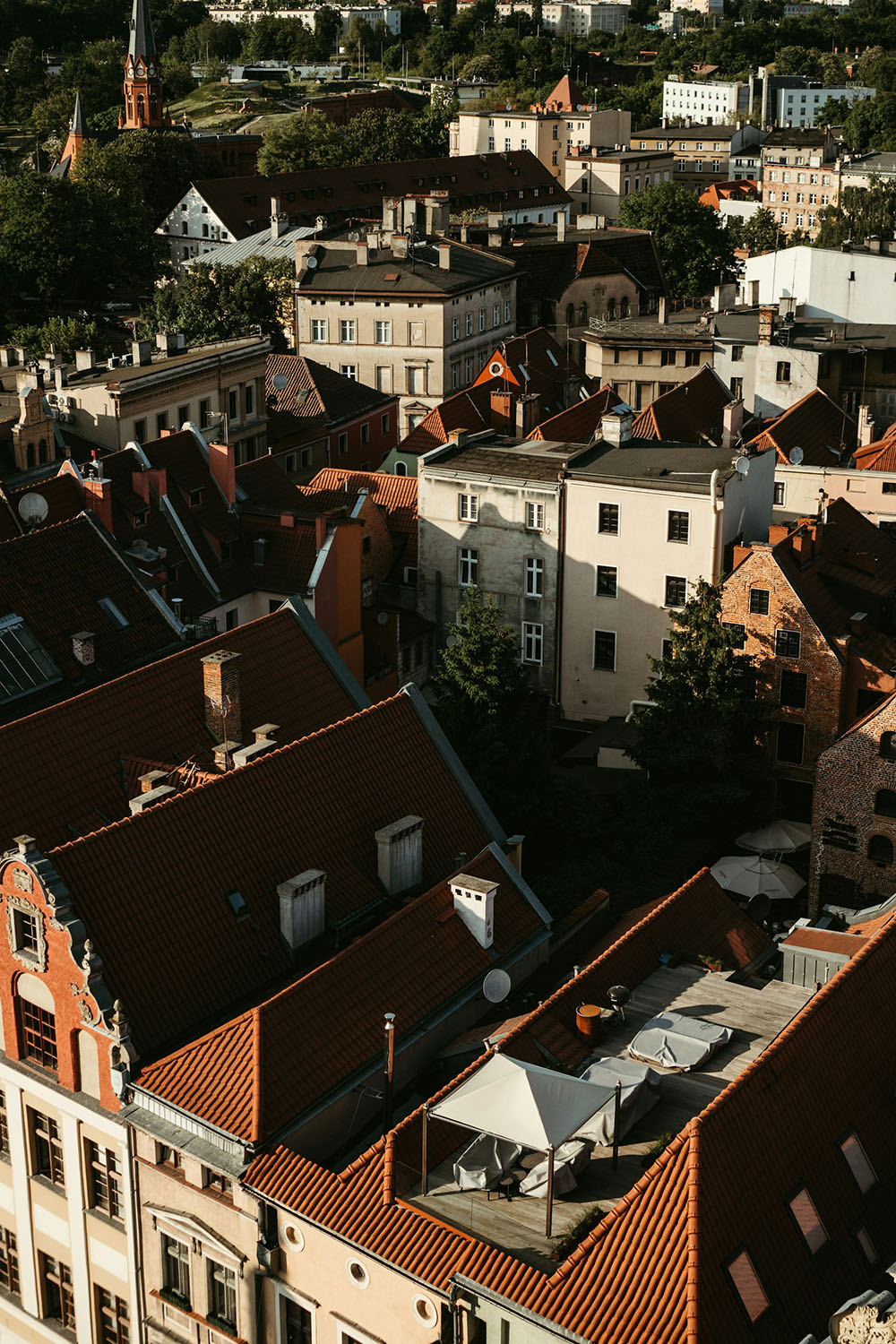
View from the Town Hall in Toruń /
Credit: Polina Kuzovkova

Nicolaus Copernicus Monument /
Credit: Dominika Jakubiec
Toruń: The Gingerbread City
Toruń, a city with a rich history, is the birthplace of the famed astronomer Nicolaus Copernicus. His birthplace and the chapel where he was christened are must-see attractions. Known for its stunning Gothic architecture, Toruń is Poland’s best-preserved Gothic town. The medieval buildings, walls, and gates are admired by many.
This picturesque city is famous for its traditional gingerbread. The Muzeum Piernika offers interactive experiences, allowing visitors to discover the delights of gingerbread making. Toruń’s Old Town is charming, with narrow cobblestone streets and quaint architecture. Remarkably, it has managed to survive the ravages of war.
Toruń boasts unique monuments and a blend of historical buildings. Visitors can explore a variety of tourist routes filled with castles, towers, and culture-focused museums.
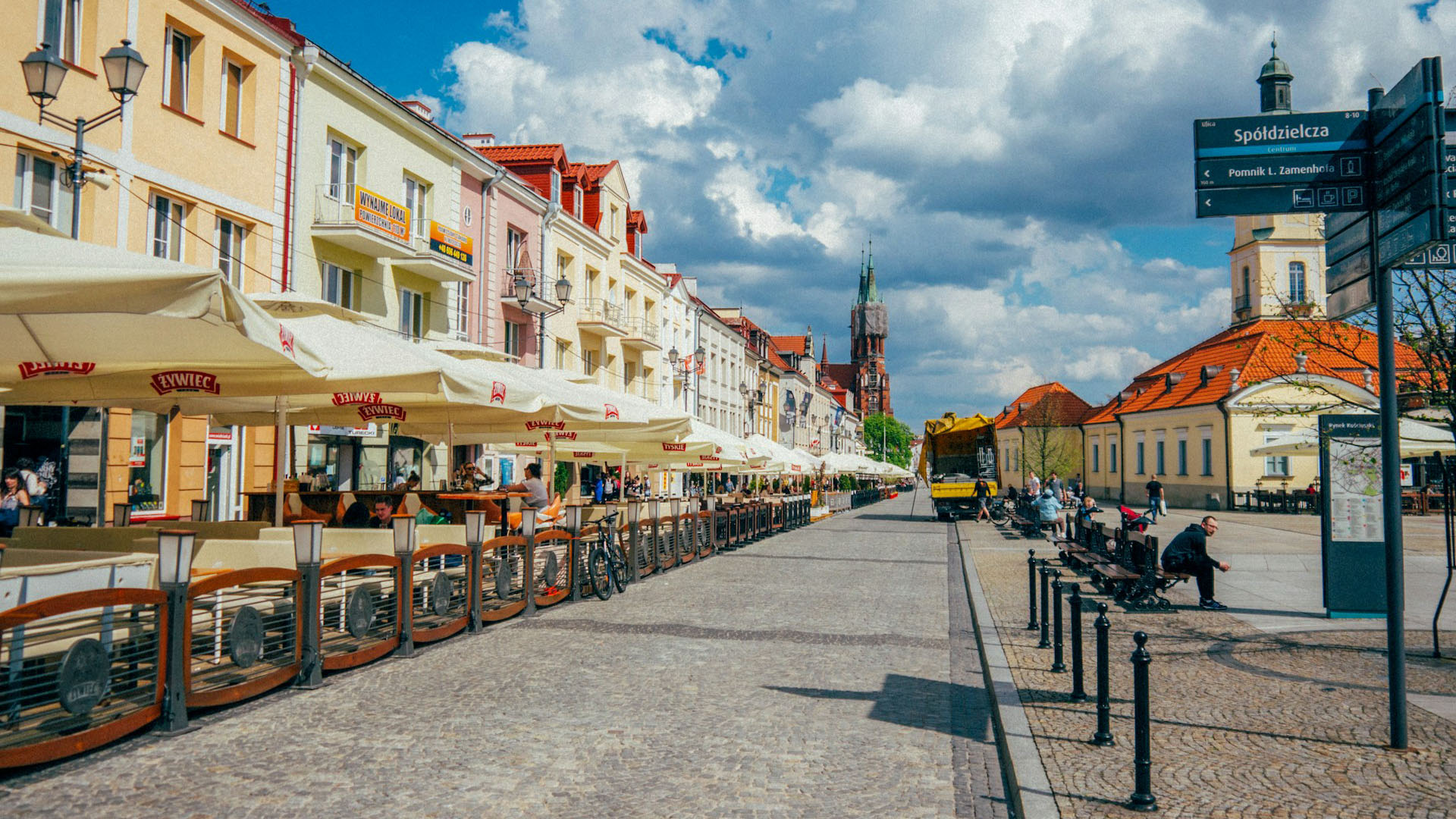
Main square with historic Town Hall /
Credit: Tomek Baginski
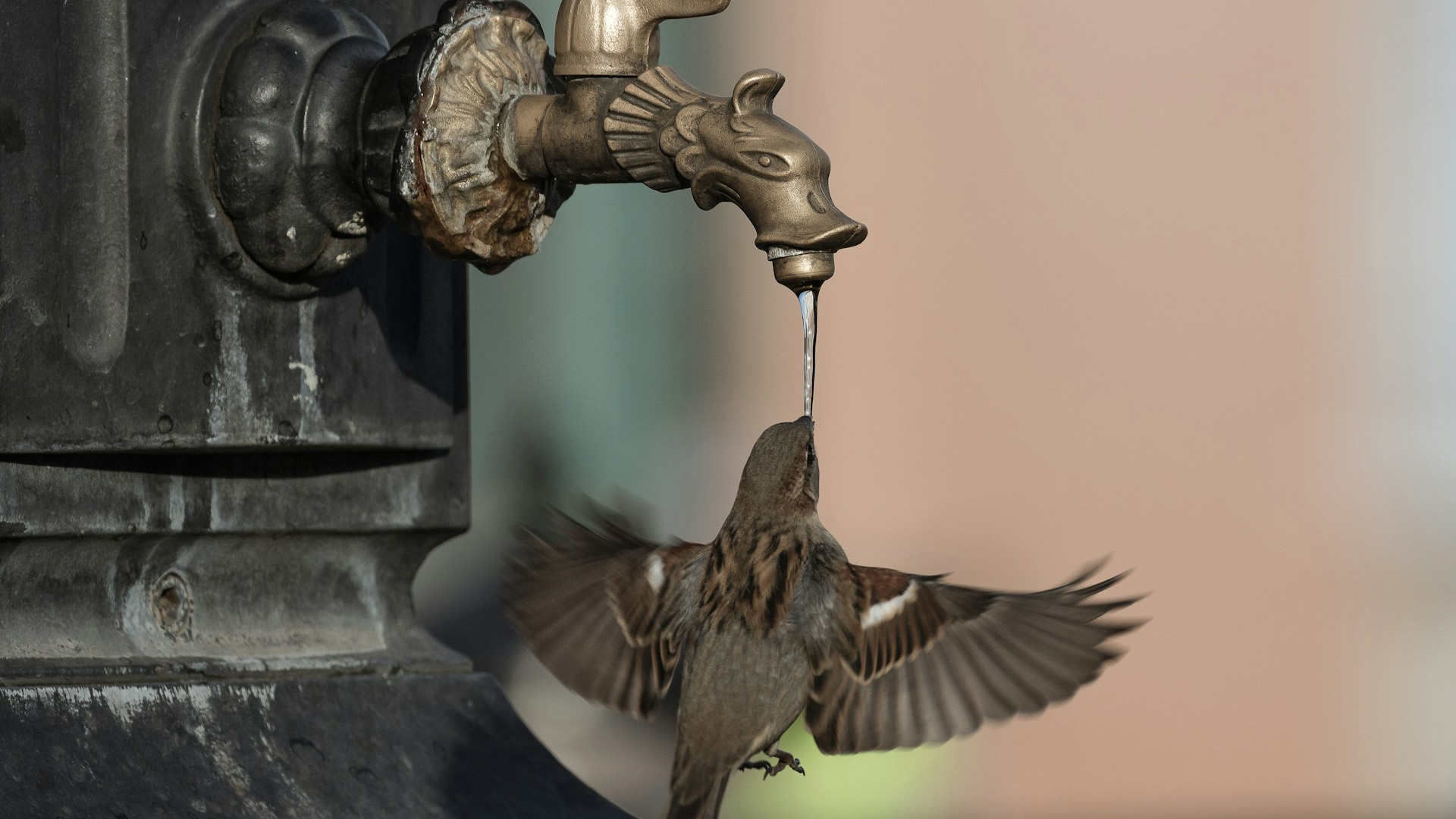
Drinking water fountain /
Credit: Wlodzimierz Jaworski
Białystok: Gateway to Białowieża Forest
Bialystok is more than just a charming town in Poland; it serves as the gateway to the Białowieża Forest, one of Europe’s largest remaining primeval forests. The city is an ideal base for visiting Białowieża National Park, a UNESCO World Heritage Site known for its pristine nature and abundant wildlife.
The area features extensive hiking and cycling trails, making it a paradise for nature lovers. It offers diverse habitats such as peat bogs, marshes, and swampy forests. Bird-watching enthusiasts will be delighted by Białowieża, where they can observe nearly half of Poland’s bird species.
Bialystok provides easy access to the forest’s rich biodiversity, making it perfect for nature lovers seeking either adventure or tranquility.
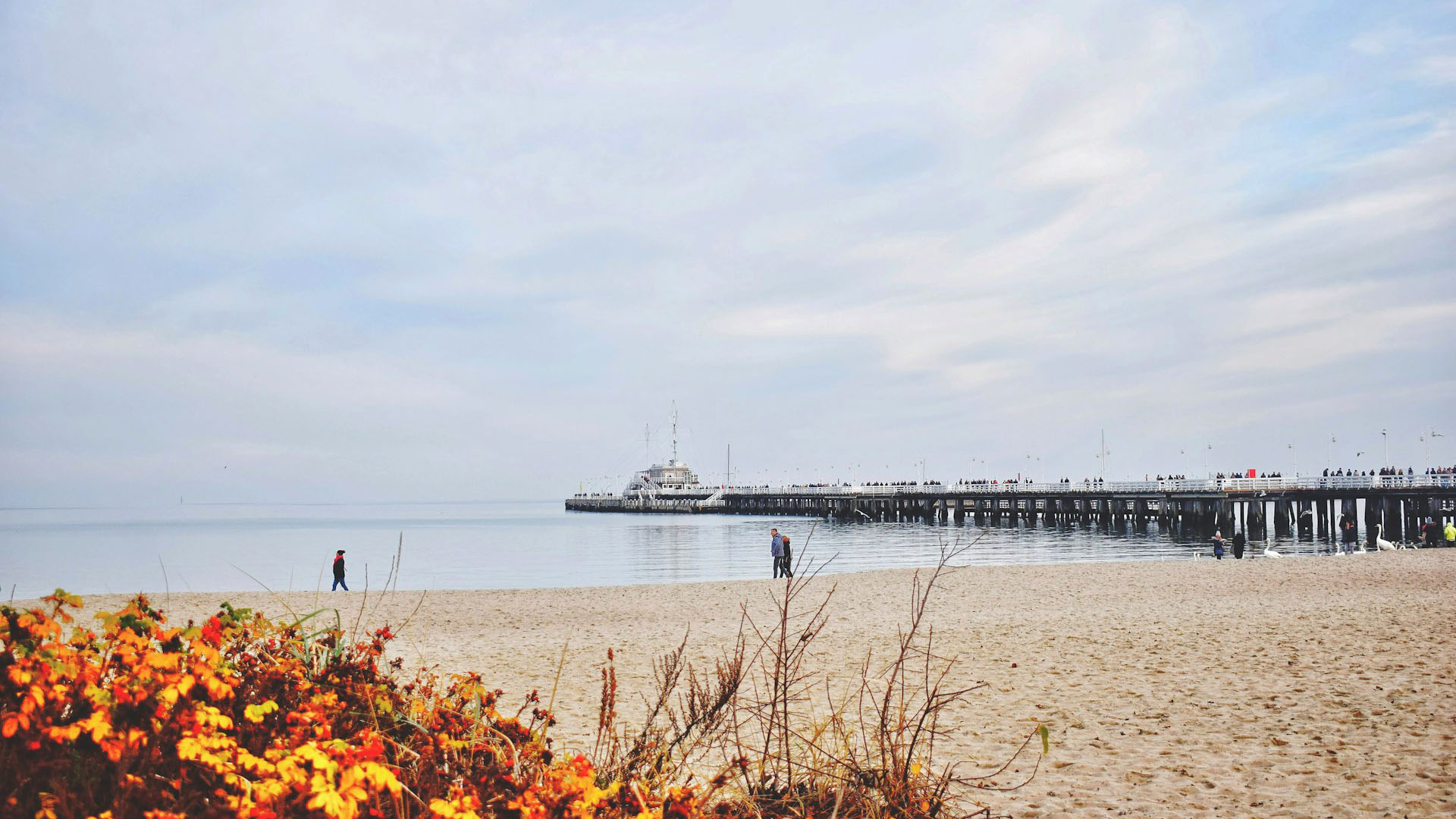
Wooden Pier in Sopot / Credit: Giuseppe Gurrieri
Sopot: The Pearl of the Baltic Sea
Sopot, known as the Pearl of the Baltic Sea, is a charming seaside resort. Nestled between Gdańsk and Gdynia, it forms part of the scenic Tricity area. Sopot features the longest wooden pier in Europe, stretching 512 metres. This pier is a favourite spot for romantic strolls and enjoying stunning sunset views.
Monte Cassino Street is the lively heart of Sopot—a pedestrian-friendly promenade lined with 19th- and 20th-century houses now serving as pubs and restaurants. The area offers a delightful blend of historical charm and vibrant energy.
Sopot is renowned not only for its nightlife and upscale restaurants but also for its tranquil beaches. Visitors enjoy the elegant villas scattered throughout the area. Once a fishing village, Sopot has evolved to combine modern amenities with remnants of its past.
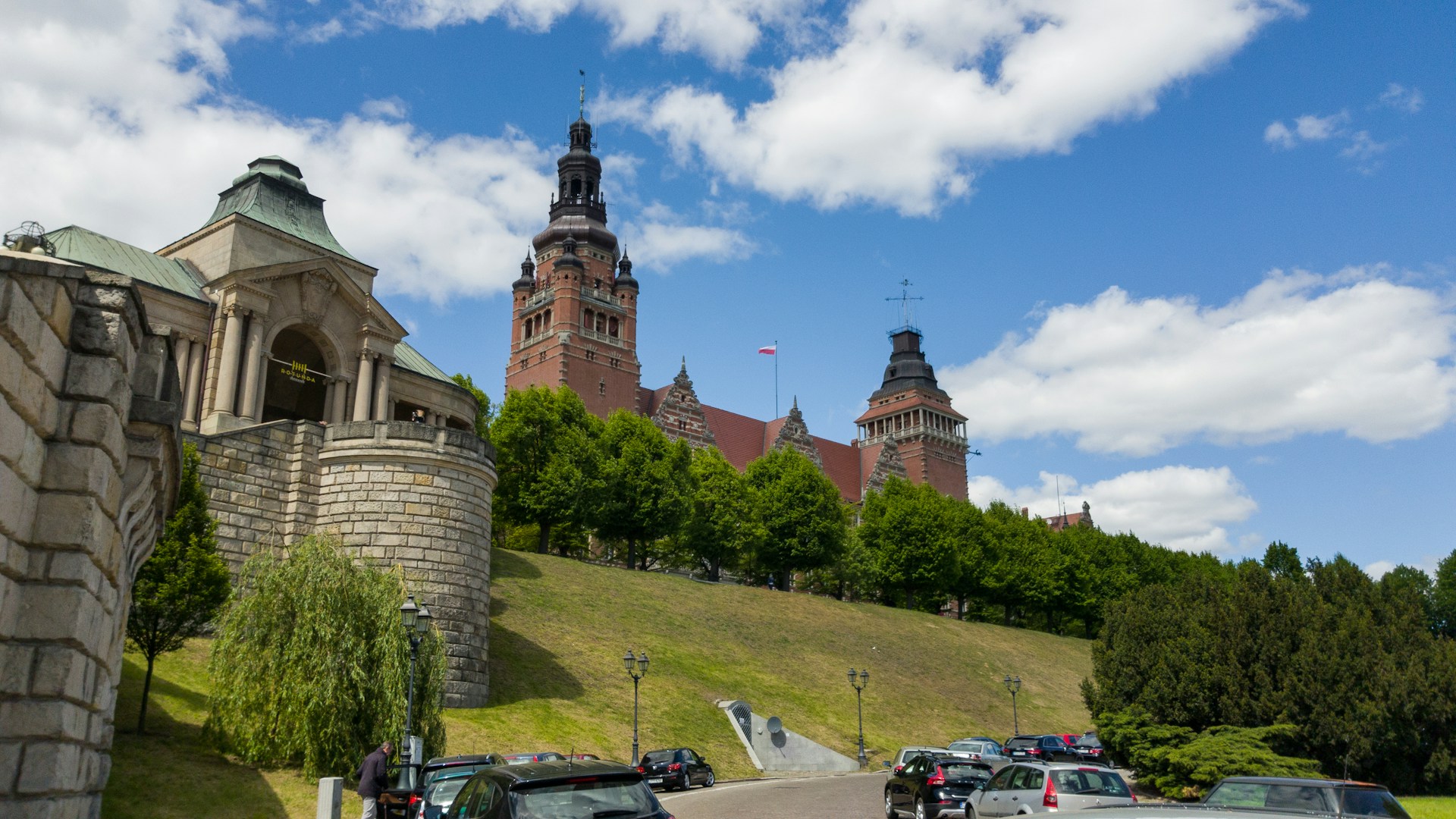
Historic administrative building on Haken Terrace / Credit: Marius Niveri
Szczecin: Blend of Culture and Nature
Szczecin, a picturesque city nestled between Berlin and Gdańsk, is a hidden gem waiting to be discovered. This vibrant city offers a stunning blend of culture and nature. Its spectacular waterfront is a must-see, featuring a summer beach, an amusement park, and a variety of food trucks. Seasonal festivities add a lively charm to the area.
Szczecin stands out with its eclectic mix of architectural styles. Here, you’ll find a unique combination of Gothic, Renaissance, and modern influences. This architectural tapestry creates a picturesque cityscape that reflects the city’s rich history and culture.
Despite its many attractions, Szczecin is often overlooked by non-German tourists. This presents a unique opportunity for those eager to explore less-traveled paths. The city’s strategic location makes it an easy day trip for travellers journeying between Berlin and Gdańsk.
The bustling port and large student population bring a youthful, energetic vibe to the city. For anyone seeking a mix of history, modernity, and natural beauty, Szczecin is a destination well worth adding to your travel itinerary.
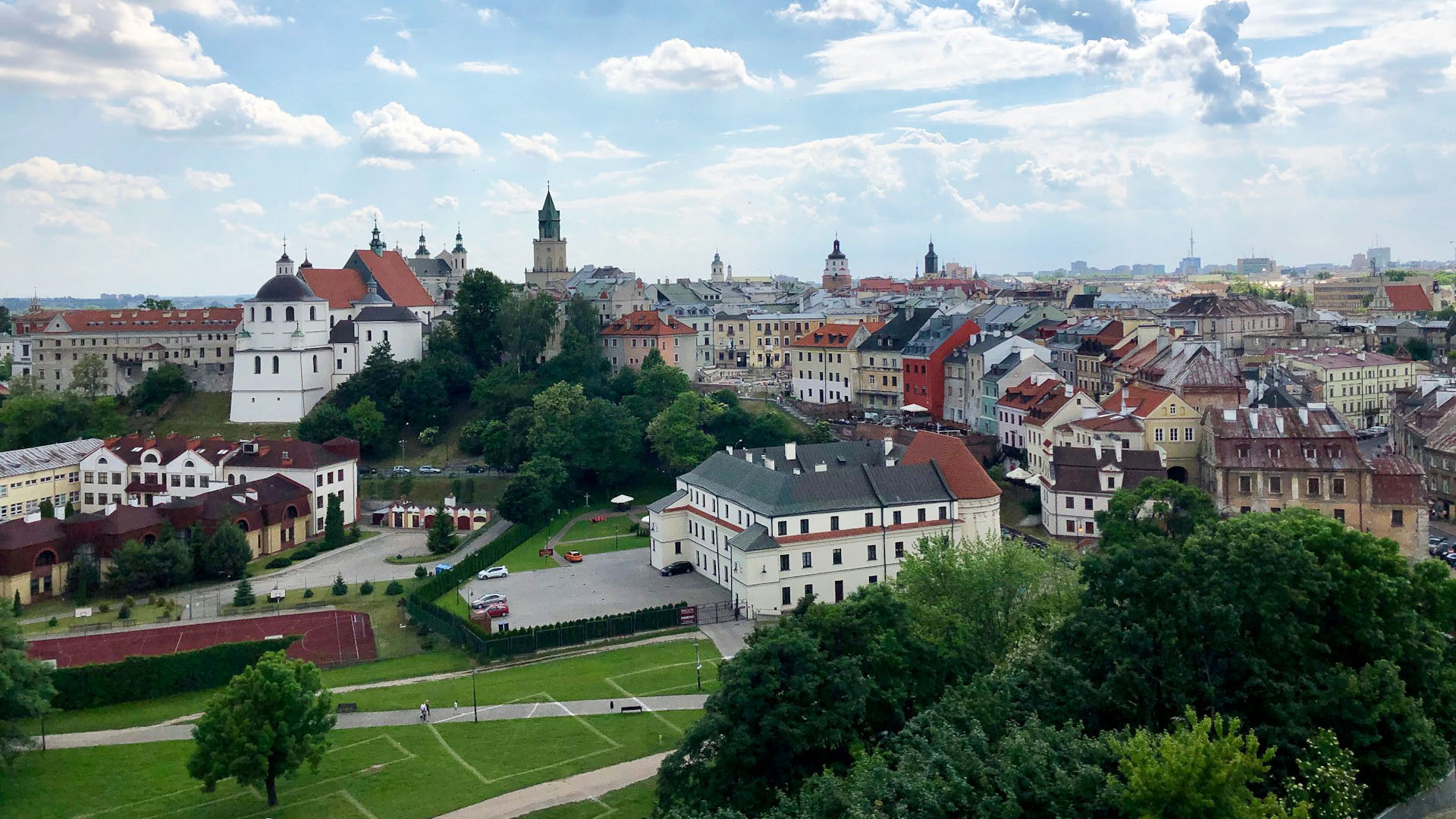
Lublin’s Old Town is the city’s most beautiful area / Credit: Maksym Harbar
Lublin: A Town of Renaissance and Heritage
Lublin, the largest city in eastern Poland, boasts a rich historical significance. This beautiful city serves as a window into the past, renowned for its medieval merchants’ residences. As a vital trade link between the Baltic ports and Kyiv, Lublin holds considerable historical value.
Lublin also preserves its extensive Jewish heritage, despite the tragic impact of World War II on its cultural landscape. The Old Town, along with Castle Hill, features numerous historical sites and captivating museums, making it an ideal destination for those interested in cultural and historical exploration.
Lublin’s well-preserved Old Town and vibrant cultural attractions make it a city worth discovering. Whether you’re wandering its ancient streets or visiting its stunning 12th-century castle, Lublin offers a unique blend of history and culture.

Henryk Sienkiewicz Park in Lódź /
Credit: Irena Carpaccio

Tuwim’s Bench in Lódź / Credit: Taylor Walling
Łódź: Poland’s Creative Hub
Lódź has transformed itself from an industrial past into a city of creativity and art. The once-grey streets now burst with colour and life, thanks to vibrant street art. Its post-industrial architecture features attractions like Manufaktura, a lively shopping and cultural area set in old factory buildings, and EC1, known as “the City of Culture,” which focuses on science and the connection between technology and culture.
Some must-visit spots in Lódź include Piotrkowska Street, famous for its beautifully renovated 19th-century buildings, and Księży Młyn, a historic area that blends old-world charm with modern creative spaces. Enhancing its cultural landscape, Lódź also offers diverse museum experiences. The Book Art Museum and a museum dedicated to the city’s 20th-century sewers provide unique insights into its rich history.
Today, Lódź stands out as a colourful and dynamic city—a true hub of Polish culture and creativity.
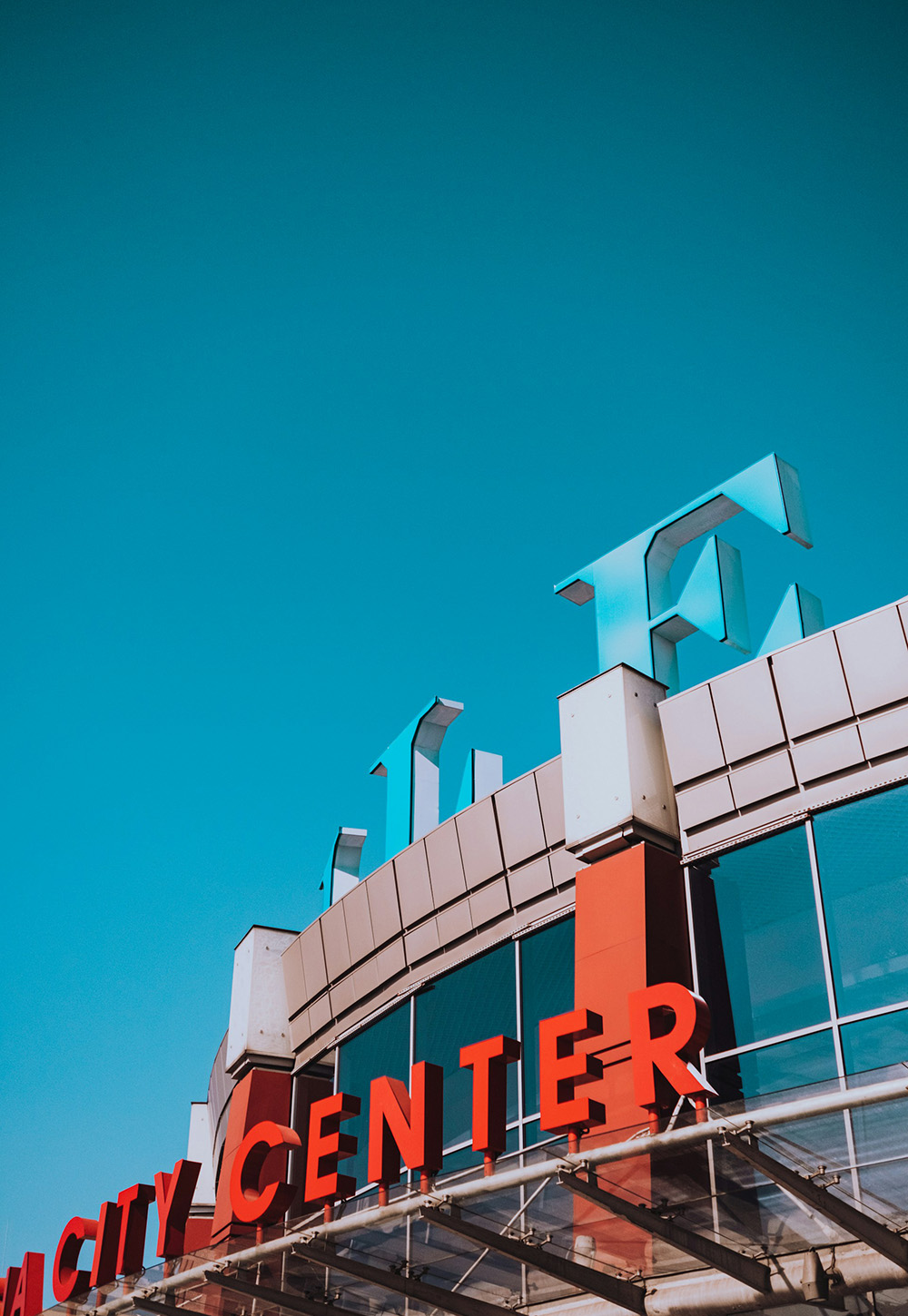
Silesia City Center shopping mall / Credit: Dan Sy

Silesian Trams has 677 stops across 29 lines /
Credit: Michael Campos
Katowice: Heart of Silesia
Katowice, known as the heart of Silesia, is a major Polish city with a rich industrial heritage. Despite its relatively recent emergence, the city has become an important commercial and cultural centre. The industrial boom of the 19th century played a key role in its rapid development. Today, Katowice is bustling with businesses and filled with vibrant restaurants, bars, and cafes.
Although Katowice lacks historical sites, it makes up for this with its modern attractions. The Silesian Museum, a must-see, showcases the region’s cultural rebirth and offers a unique glimpse into Poland’s art and history.
Katowice is also known for its excellent transport links. It is easy to reach nearby cities and attractions, making it a convenient hub for visitors exploring the region.
While it may not have ancient landmarks, Katowice’s charm lies in its modernity and vibrancy. With so much to offer, it deserves a place on every traveller’s itinerary.
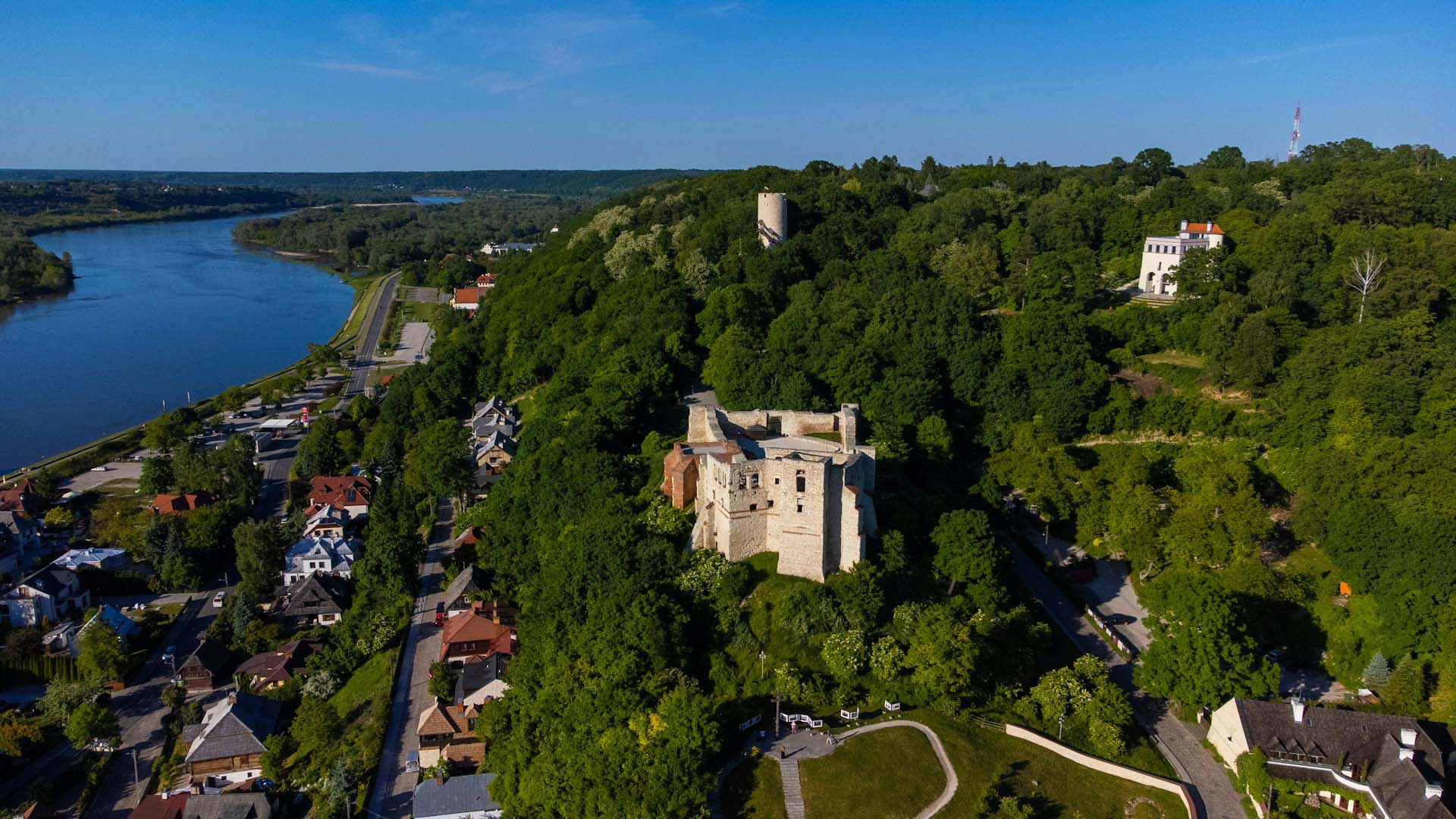
Kazimierz Dolny on the bank of the Vistula River / Credit: Damian Wyroslak
Kazimierz Dolny: A Serene Artistic Retreat
Kazimierz Dolny is a picturesque town along the Vistula River in Poland’s Lublin Province. Known for its rich history and charming old town, it is a haven for art lovers. The town boasts a vibrant artistic community, with numerous art galleries and scenic views that attract both local and international artists.
Visitors will find a peaceful retreat, especially if they come on weekdays or outside the peak tourist season. The town’s quiet charm makes it an ideal getaway. Despite its beauty, Kazimierz Dolny remains a hidden gem for foreign tourists.
The architecture is striking. Mansions in the Lublin Renaissance style stand proudly, surrounded by scenic loess ravines. These settings enhance the town’s appeal, providing a perfect backdrop for creative minds.
Kazimierz Dolny’s small-town ambiance make it a desirable destination. Whether you are an artist or a tourist, it promises a memorable experience.
Discover Poland’s Cities: A Mix of History, Culture, and Modern Life
Poland’s cities offer a vibrant blend of history, culture, and modern life. With historic landmarks, beaches, nightlife, festivals, and diverse cuisine, they serve as perfect gateways to explore Poland’s rich past and lively present.
Contact the Polish National Tourist Office to plan your trip and reach out to LOT Polish Airlines for direct flights to Poland.
